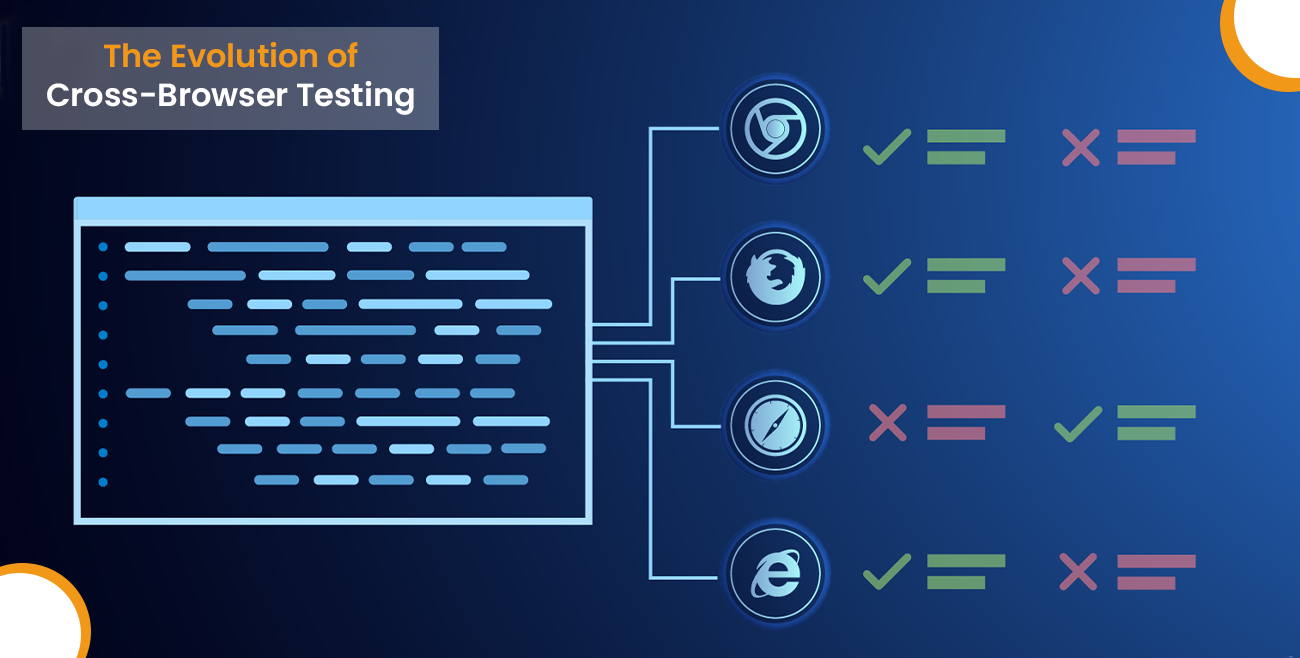Browser testing is a key part of ensuring that your website or application looks and behaves the same for all users, regardless of their browser. In the early days of the web, cross-browser testing was a difficult process, as each browser had its quirks and inconsistencies. However, browsers have become more uniform in their behaviour over time, making cross-browser testing much easier. In this blog post, we will look at the evolution of cross-browser testing and discuss some of the best tools and methods for performing it.
The Early Days of Browsers
For most of the web’s history, the only browsers available were limited in their abilities. Netscape Navigator was released in 1994, and Firefox wasn’t released until 2004 – that means that for 15 years, there was effectively no browser competition on the market. The introduction of Firefox marked a significant shift in browser usage, as it spurred innovations in both Chrome and Safari – the two most popular browsers today.However, there was little to no emphasis on cross-browser testing for this period.
The birth of Cross Browser Testing
As Internet Explorer became the dominant browser during the early 2000s, many websites began to experience IE’s”quirky” behaviour. An increasingly vocal group of developers lobbied for Microsoft to fix these issues, but the company’s only response was that other browsers were ” good enough “. This led to the formation of browser tests such as Acid 3, which developers still use today.
The Rise of Cross Browser Testing
In 2005, Steve Jobs wrote an open letter to the computer industry in which he called out Adobe, Microsoft, and other companies for using their vendor lock-in to ” strip [developers] of control over their own technology choices,” and said that Apple was doing everything they could to support cross platform development. This led to a significant increase in interest in cross-browser testing. It becomes clear that a website or application could perform very differently based on the browser being used.
In 2007, Google said Microsoft was “not serious about web standards” and highlighted issues with IE6 in an attempt to convince developers not to use it. This caused many companies to move away from IE6, leading Microsoft to announce its end of support for IE6 in 2009 – a huge step forward for the web.
The benefits of automated cross-browser testing
For the first time, companies started to test on several browsers at once – and this is where automated cross-browser testing took off. Fundamentally, automated cross-browser testing means running a given set of tests against a representative sample of browsers without any manual intervention. It allows developers to ensure that their websites look and behave exactly as they expect across many different browsers.
This had two huge benefits for web developers. The first benefit was that it made cross-browser testing much easier, as they could run all their tests with just a single click of a button. The second benefit was that it freed up time to test other parts of the application – often things like performance and security, which were previously not tested frequently.
The Big Shift to Automated Testing
Over the last few years, there has been a significant shift from manual cross-browser testing to automated testing – and this has happened for several reasons. Firstly, the demand for more browsers has meant that it is now possible to target specific browsers with specific test cases which use their unique features – e.g., Safari’s ability to access user’s address books or Firefox’s support for the HTML5 video element.
Secondly, because automated tests are executed automatically, they can be run much faster than manual tests. It is not uncommon to run thousands of these automated tests within a few seconds. This has allowed developers to release high-quality web apps and websites on a much larger scale than was previously possible.
The Future of Cross Browser Testing
Looking forward, we can expect to see two major trends in cross-browser testing:
- Firstly, the number of browsers covered by automated cross-browser testing is likely to increase significantly. This is because new browsers are released every month, and it is difficult for developers to keep up.
- Especially when they are not even aware of them! Automated cross-browser testing will play a major role in helping to solve this problem by ensuring that these browsers are properly tested.
- Secondly, the demand for faster releases means that companies will be less tolerant of issues that appear on specific browsers. This means that it will become less acceptable to have the same test suite execute against one browser for hours.
- Companies will want an approach to find issues quickly, thereby increasing their development velocity. Automated cross-browser testing will allow them to achieve this without compromising on quality.
In conclusion, automated cross-browser testing is already playing a key role in the industry – and we can expect it to grow significantly over the next few years. This increased focus on automated cross-browser testing will ultimately lead to better, faster and more stable web apps and websites.

















